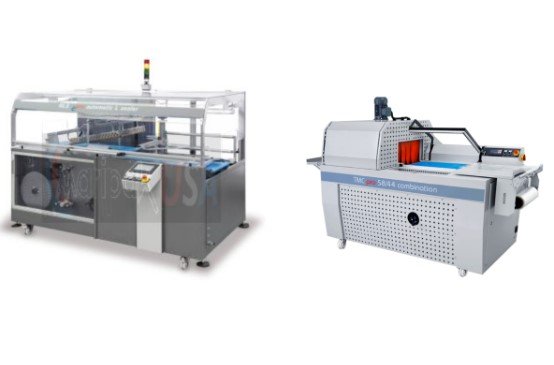In modern manufacturing and packaging industries, efficiency and precision are paramount. One essential tool that businesses rely on to streamline operations is a machine for shrink wrapping. Whether packaging food products, consumer goods, or industrial items, a shrink wrapping machine ensures items are securely wrapped, protected from environmental factors, and visually appealing for retail presentation. Choosing the right equipment requires understanding the core features that can significantly impact productivity, durability, and operational costs.
Understanding Shrink Wrapping Machines
A machine for shrink wrapping uses heat to tightly seal products in a plastic film, providing a protective layer that is both secure and aesthetically pleasing. These machines come in various configurations, from manual to fully automated systems, catering to businesses of different scales. Key considerations include speed, efficiency, material compatibility, and ease of use.
Shrink wrapping offers several benefits for businesses:
- Protection: Products are shielded from dust, moisture, and damage during transit.
- Security: Shrink wrapping can deter tampering and theft.
- Presentation: Provides a polished and professional look for retail packaging.
- Efficiency: Automated machines can handle high volumes with consistent results.
Understanding the types and features of shrink wrapping machines helps buyers select equipment that aligns with their production needs.
Essential Features to Look For
When selecting a machine for shrink wrapping, certain features distinguish high-performance models from standard options. These include:
1. Wrapping Equipment Compatibility
The type of wrapping equipment used plays a crucial role in ensuring consistent performance. High-quality machines support various film types, such as PVC, polyolefin, and polyethylene, allowing flexibility for different product shapes and sizes. Advanced machines can also adjust tension and sealing settings automatically, optimizing the wrap for each item and minimizing film waste.
2. Motorized Belt Systems
Many industrial shrink wrapping machines incorporate a motorized belt system, which ensures smooth and uniform movement of products through the heat tunnel. This feature improves efficiency by maintaining consistent speed, reducing manual intervention, and preventing jams or misalignment during the wrapping process. Motorized belts are especially beneficial in high-volume production lines, where speed and precision are critical.
3. Adjustable Heat and Speed Settings
The ability to control heat and conveyor speed is vital for achieving optimal shrink results. Adjustable settings allow operators to tailor the process for different packaging films and product types, preventing damage to delicate items while ensuring a tight, professional wrap.
4. Safety Features
Safety is a top priority in industrial equipment. Look for machines with emergency stop buttons, protective covers, and heat-resistant components. These features reduce the risk of workplace accidents while maintaining operational efficiency.
5. Durability and Build Quality
A reliable machine for shrink wrapping should be constructed from high-quality materials like stainless steel or heavy-duty aluminum. Durability ensures long-term performance, reduces maintenance costs, and minimizes downtime due to repairs or equipment failure.
Types of Shrink Wrapping Machines
Understanding the different types of shrink wrapping machines can help buyers make informed choices:
- Manual Shrink Wrappers: Ideal for small-scale operations, these require manual feeding of products and operation of heat guns. They are cost-effective but less efficient for high-volume production.
- Semi-Automatic Shrink Wrappers: These machines combine manual loading with automated heat tunnels or sealing systems. They offer a balance of affordability and efficiency.
- Fully Automatic Shrink Wrappers: Designed for high-volume production, these systems automate feeding, wrapping, sealing, and transport via motorized belt systems. They maximize throughput while reducing labor costs.
- L-Bar Sealers: A common type of shrink wrapper that uses an L-shaped sealing bar to seal the film before passing it through a heat tunnel. Ideal for various product shapes and sizes.
Maintenance Tips for Longevity
To ensure a machine for shrink wrapping continues to operate efficiently, regular maintenance is essential:
- Regular Cleaning: Remove film residue, dust, and debris from rollers, belts, and heat tunnels.
- Lubrication: Keep moving parts, especially in motorized belt systems, properly lubricated to prevent wear and tear.
- Check Electrical Components: Inspect wiring and heating elements to avoid malfunctions.
- Replace Worn Parts: Timely replacement of seals, belts, and rollers extends machine lifespan and maintains quality.
- Follow Manufacturer Guidelines: Adhering to recommended operating procedures ensures optimal performance and safety.
Conclusion
Investing in a high-quality machine for shrink wrapping is a strategic decision that enhances product protection, presentation, and operational efficiency. Features such as versatile wrapping equipment compatibility, motorized belt systems, adjustable heat and speed settings, and robust safety measures ensure smooth, reliable performance. By selecting the right shrink wrapping machine and adhering to proper maintenance practices, businesses can optimize their packaging process, reduce waste, and maintain consistent quality. For companies looking to elevate their packaging operations, a reliable machine for shrink wrapping is an indispensable asset.



